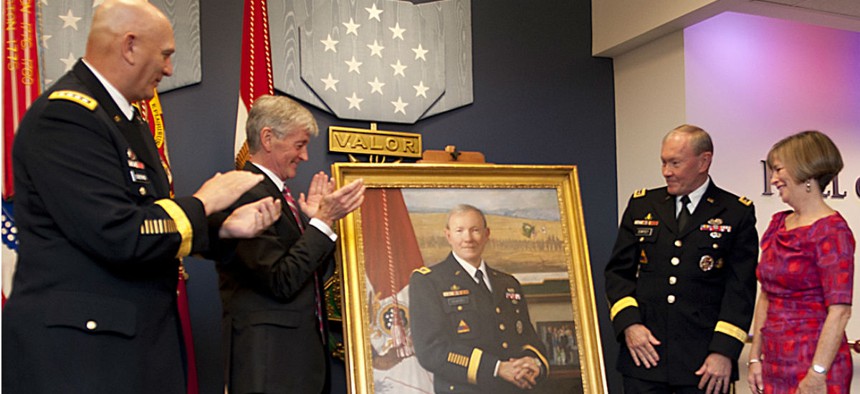Banning Executive Portraits Might Save Half a Million Dollars
A picture may be worth 1,000 words, but some lawmakers don’t think they’re worth a dime in taxpayer funds.
The once-common practice of spending agency funds on formal oil portraits of top officers has been banned from appropriations bill since 2014. But in January, Sen. Bill Cassidy, R-La., introduced the EGO Act (S 188) from a previous Congress to make the ban permanent.
On Friday, the Congressional Budget Office released its score, saying the bill could reduce future costs, but “those effects would be less than $500,000 annually because CBO expects that fewer than 20 portraits would be purchased with federal funds in most years.”
Though precise data are scarce, CBO said the cost of past portraits appears to have been some $25,000 per portrait, based on past contracts. “We expect that most portraits of federal officials are for those in the line of succession to the presidency, members of the legislative branch, and military service personnel,” the nonpartisan agency said.
Cassidy’s bill, co-sponsored by Sens. Claire McCaskill, D-Mo., Deb Fischer, R-Neb., and Ron Johnson, R-Wis., would ban funding for portraits of any officer or employee of the federal government, including the president, vice president, cabinet members, and members of Congress, but not the judicial branch.
It cleared Johnson’s Homeland Security and Governmental Affairs Committee on March 15.
“When America is trillions of dollars in debt, we should take every reasonable measure to reduce the burden passed on to our children and grandchildren," Cassidy said. “Tax dollars should go to building roads and improving schools—not oil paintings that very few people ever see or care about.”
McCaskill added that taxpayers expect officials to pay for their own portraits. “I’d encourage anyone who’s commissioned a portrait using Missourians’ hard-earned tax dollars to come back to my state with me and ask folks how they feel about it—they’ll get an earful,” she said.








